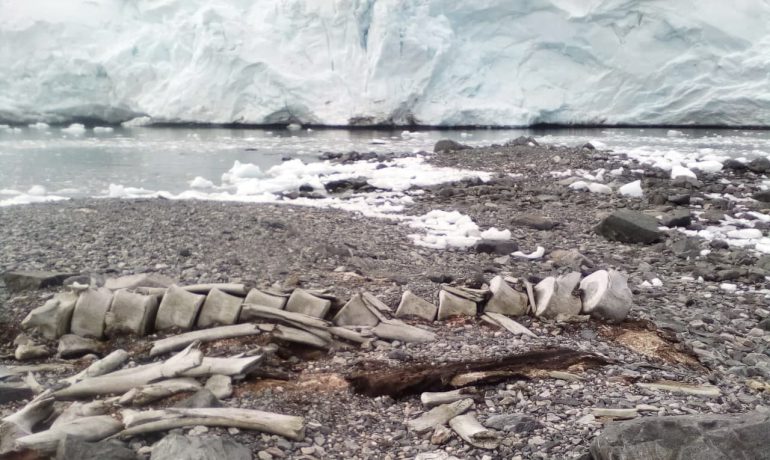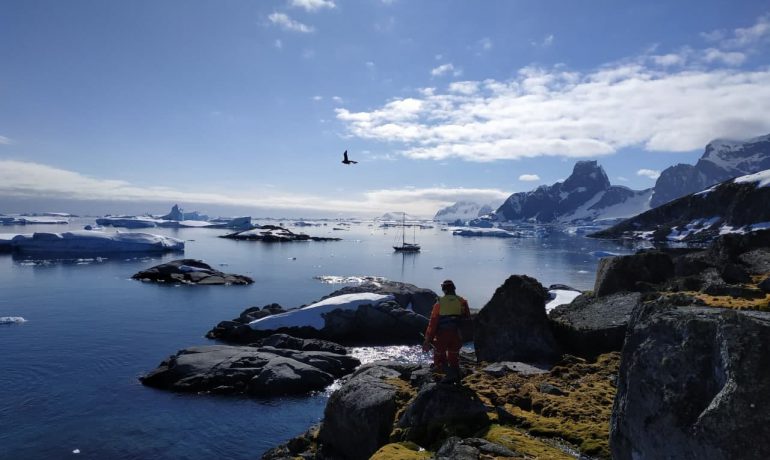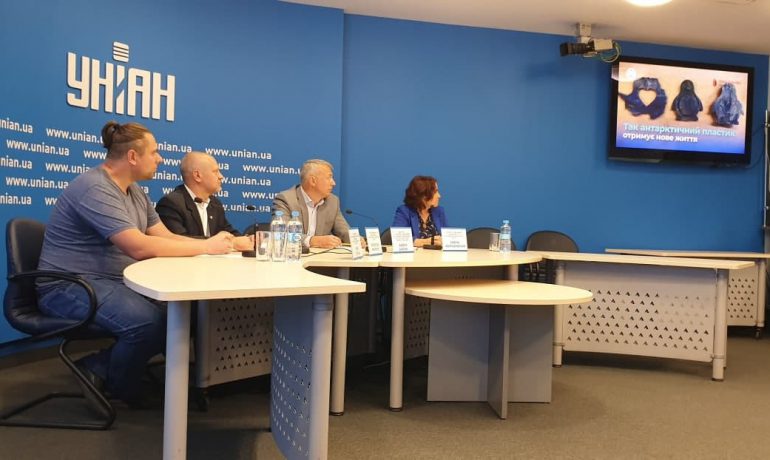Maybe you remember we wrote about the studies of the rests of the mysterious whale in Antarctica? We mean the whale, whose bones for many years laid in the Rasmussen…


Maybe you remember we wrote about the studies of the rests of the mysterious whale in Antarctica? We mean the whale, whose bones for many years laid in the Rasmussen…

How to minimize the tourist impact on the Argentine islands area – one of the most visited sites in Antarctica, where Ukrainian Antarctic Akademik Vernadsky station is located? This is…

Equipment for plastic recycling was installed at the Ukrainian Antarctic Akademik Vernadsky station with the support of Coca-Cola HBC in Ukraine: it will allow not only to reduce the amount of waste, but also to produce souvenirs for tourists. This was discussed during a press conference held today, September 8, at the UNIAN press center.
Plastic recycling at Vernadsky is extremely important, because Antarctica is a huge nature reserve. The continent has strict rules for waste management: people should not leave any garbage behind. At the station, household waste is collected separately in several fractions: metal, PET plastic (labeled 01 “plastic bottles”), HDPE plastic (labeled 02 “plastic caps, bottles of household chemicals”), glass, organic, etc. At Vernadsky, other waste (cardboard, polyethylene, and packaging) is compacted using a press, which makes it possible to reduce its volume. The compacted waste is transported by ship to Chile, where it is recycled for a lot of money. During the year, the station produces about 50 such large bags of “other garbage”, each of which weighs from 20 to 50 kg. Starting this year plastic bottles have been compacted separately. Metal and glass are removed separately in barrels.
It is important to avoid negative impact on wildlife not only from polar explorers but also from tourists. Our station is one of the most visited places in Antarctica. It is located in the maritime Antarctic, on Galindez Island, where you can, in particular, watch whales, seals, thousands of penguins. Before the COVID-19 pandemic, about 4,000 tourists visited the station during the short Antarctic summer.
From now on, with the financial support of Coca-Cola HBC in Ukraine, sorted plastic in Antarctica will get a second life and turn into souvenirs for tourists.
”Plastic has become a major pollutant of the World Ocean in the 21st century; microscopic fragments of plastic packaging from Europe, Asia and America are carried by currents all over the planet, and even in its purest part – Antarctica – they clog the stomachs of plankton animals, breaking food chains and leading fish, whales and penguins to starvation. Our station “Akademik Vernadsky” is visited by tourists from different countries, so who better than us can take on an educational role, explaining the “plastic threat” to people and demonstrating how each of us can reduce it”, – said Evgen Dykyi, Director of the National Antarctic Scientific Center.
At Vernadsky, a closed cycle of plastic recycling marked 02 or HDPE was created: these are mainly bottle caps and bottles for household chemicals. The system includes a plastic shredder, an extruder (where plastic melts) and a number of molds for making souvenirs.
“Coca-Cola implements the World Without Waste strategy around the world, fulfilling its commitment to packaging management. Packaging waste can now be recycled in Antarctica as well,” said Andriy Bublyk, Coca-Cola HBC Director of Public Relations and Communications in Ukraine, Armenia and Moldova.
He has also noted that the establishment of HDPE plastic processing at our station will have a significant educational effect, given the significant number of tourists that after the COVID-19 pandemic and the opening of Antarctica will bring souvenirs made at Ukrainian station around the world.
In general, the project on the improvement of separate collection of plastic and recycling of part of the sorted plastic directly at the station will help reducing human footprint on the fragile Antarctic ecosystem, enhance the image of Ukrainian station, reduce waste management costs and set a good example for others.

